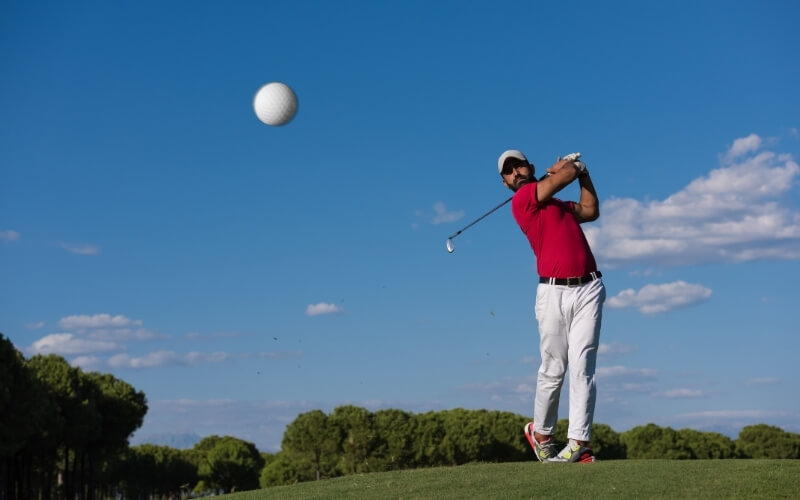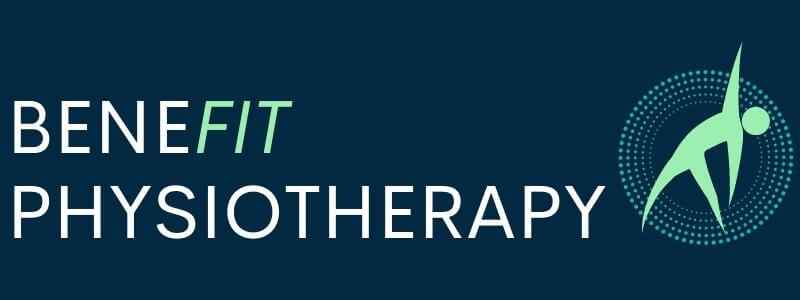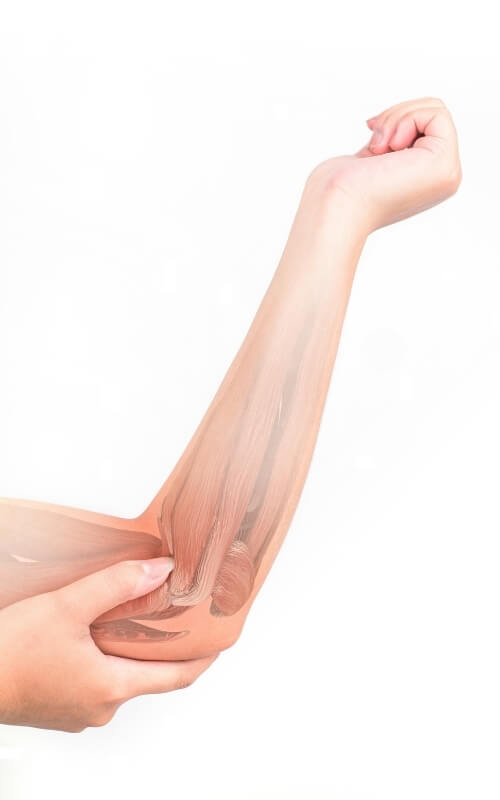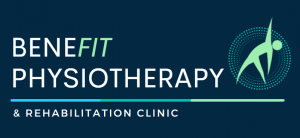What is Golfer’s Elbow?
Golfer’s elbow, also known as medial epicondylitis, is a common injury involving the tendon located at the inside of the elbow.
The unique thing about this tendon – and the reason it is prone to injury – is that there are five muscles which all share one tendon which connects to the inside of the elbow. This is called the common flexor tendon (CFT).
These five muscles are:
- Pronator teres
- Flexor carpi radialus
- Palmaris longus
- Flexor carpi ulnaris
- Flexor digitorum superficialis
These muscles all work together to move the forearm, wrist and fingers.
Constant repetition of these movements will cause a repetitive microtrauma to the tendon which results in a tendinopathy.
Although this injury is commonly observed in golfers (hence the name), it also occurs in other sports that involve repetitive throwing, lifting or gripping such as cricket, baseball and weightlifting.
We also observe golfer’s elbow with repetitive daily tasks like moving furniture and gardening.
What causes Golfer’s Elbow?
Golfer’s elbow occurs with repetitive loading of the CFT through excessive lifting, gripping or throwing. Generally, this will occur after a sudden increase in load such as lifting furniture while moving house or after coming back from a week-long golf trip.
You will also be more prone to golfer’s elbow if you have weakness in any of the five muscles which connect to the common flexor tendon. A weakness in the muscles will place the CFT under greater stress and cause an overload of the tendon.
Another cause of golfer’s elbow is poor technique. In golf this may involve excessive swing from the arms rather than rotation from the hips and trunk. In throwing sports it may be due to reduced shoulder rotation.
Seeking advice from your physiotherapist on how to correct your technique will help improve your long-term outcomes for golfer’s elbow.

Reasons to See Your Physiotherapist for Golfer’s Elbow Treatment.
Golfer’s elbow is not a straightforward condition to treat. It’s a complex tendon problem which is usually poorly managed resulting in chronic pain and disability. In approximately 20% of cases there will be associated irritation of the ulnar nerve (which also passes on the inside of the elbow) causing tingling and numbness into the forearm and pinky finger.
Your physiotherapist will conduct a thorough examination of your injury and identify the underlying causes. They will then provide a rehabilitation program to eliminate the cause and improve tendon strength through exercise.
Treatment for Golfer’s Elbow
The treatment for Golfer’s Elbow follows three main phases:
- Settling the acute pain
- Rehabilitation exercises and strengthening (Golfer’s elbow exercises)
- Return to sport
Phase I: Settling the Acute Pain
The hardest part of this phase is avoiding further irritation. Often this involves stopping the sport that you love and allowing the tendon to rest and recover.
Using the basic treatments of rest, ice and compression will reduce the amount of stress on the tendon attachment to the bone and will help reduce your pain. In some cases, medications can get the ball rolling and reduce your time away from the sport.
Although this won’t fix the problem and won’t help to strengthen the tendon, this often overlooked phase of golfers elbow treatment is essential to proper recovery.

Phase II: Golfer’s Elbow Exercises
Golfer’s elbow exercises are the most successful method for treatment of golfer’s elbow. The exercises are designed to load the CFT in a specific way to strengthen and repair the tendon. Exercise is essential for successful recovery and long-term prevention of further injury.
The rules of engagement are simple, avoid pain during your exercises and make sure your pain doesn’t increase afterwards.
Once you’ve covered these basic principles you will need to remain persistent. Golfer’s elbow takes several months to completely recover.
You will start to notice a reduction in pain when the tendon starts adapting to the exercises. After the pain is reduced, it’s important to continue performing your rehab exercises to complete the recovery process.
Getting the tendon back to normal is a long and tedious process but it produces consistent results which will get you back to the sport that you love.

Phase III: Return to Sport
In the case of golfer’s elbow, the return to sport phase occurs simultaneously with ‘Phase II: Golfer’s Elbow Exercises.’ This is because going back to your regular sport will help strengthen the CFT.
It’s important to gradually return when going back to your sport. Being too enthusiastic and rushing back to sport is not a good idea. Graded return will prevent excessive strain on the tendon and avoid setbacks in your rehabilitation.
An example of reduced load for a golfer would be playing 9-holes rather than 18-holes per round.
Other Treatment Options
Firstly, it’s important to understand that the following treatment options are not intended to replace exercises for golfer’s elbow treatment.
In some cases, they help relieve pain to improve your ability to perform the exercises. Others act as an adjunct to improve the effectiveness of golfers elbow exercises.
These alternative treatments don’t significantly reduce your recovery period.
Corticosteroid Injection is a pain-relieving treatment for golfer’s elbow. Although the short-term results are very successful for reducing pain, the probability of the injury reoccurring is high. Some studies report that corticosteroid injections into the tendon can cause harmful long-term effects.
Medication is primarily used for pain control. This may involve medications such as non-steroidal anti-inflammatory drugs (NSAIDs). However, the effectiveness of these medications is controversial and many patients report no benefit in the chronic phases of golfer’s elbow. It may be beneficial in reducing pain and allowing you to complete the first phase of rehabilitation quicker.
Autogous blood and platelet-rich plasma (PRP) injections is a process by which certain elements of your own blood are reinjected into the tendon to assist with recovery. Despite there being some good evidence for this treatment, the research results are inconsistent and so are results with patients. On top of this, it’s an expensive and very painful process! This treatment is something I only recommend when all other options have been exhausted.
Extracorporeal Shockwave Therapy (ESWT) is a relatively new treatment method which has shown promising results for golfers elbow treatment. It provides mechanical stimulation to the tendon which (when used with the exercises) improves the healing of the tendon. It’s shown to have good long-term results as well. Like PRP injections, this is a painful process which would only be used if other treatment methods have failed.

Most people view golfer’s elbow as an injury that causes inconvenience and annoyance rather than significant disability. But it’s important to treat golfer’s elbow properly and fix the underlying tendon pathology to prevent chronic pain and worsening of the condition.
Because of the complexity of this injury it is important to consult your physiotherapist for advice and rehabilitation guidance.
One-on-One Physiotherapy Care – Complete Attention – You Deserve It !
Contact Us today to find out how we can help you.



